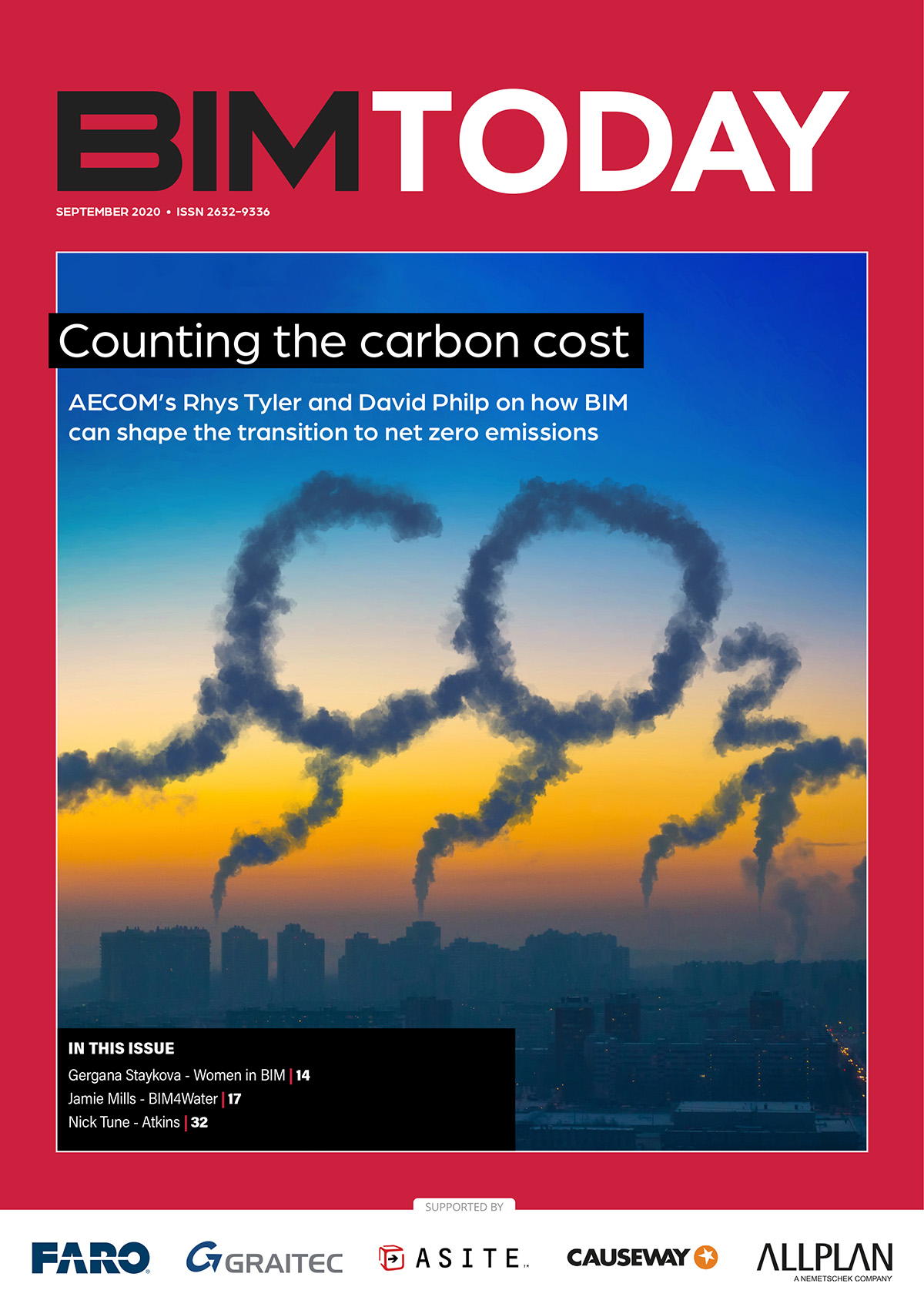Welcome to the September edition of BIM Today. This issue looks at some of the increasingly diverse and innovative applications of BIM, IoT, machine learning and other digital construction techniques around the world
In our cover story, Rhys Tyler and David Philp of AECOM examine the role of BIM and machine learning in monitoring carbon emissions as part of the transition to a more sustainable built environment.
We also hear from Gergana Staykova about Women in BIM’s webinar at the Festival of BIM & Digital Construction discussing the different experiences of women working in BIM around the world, while Jamie Mills outlines the work of BIM4Water and its efforts to expand during the Covid-19 pandemic.
Elsewhere, Gillian Charlesworth calls for a sustainable recovery from lockdown, Fiona Moore details the work of the Centre for Digital Built Britain’s BIM Interoperability Expert Group and Keith Waller sets out the Construction Innovation Hub’s Value Toolkit.
In addition, there’s Nick Tune on the story of CUSP, a partnership between Atkins and Cardiff University to develop an advanced digital twin programme, while Dane Ralton of iOpt argues the time has come to make IoT adoption in housing the “new normal”.
There’s much more besides, including the Scottish Futures Trust’s new Standard Information Management Plan, which aims to embed BIM processes in the Scottish Government’s £1bn Learning Estate Investment Programme, and Adrian Timberlake of Seven Technologies Group on the potential of BIM platforms in planning counter-terror strategies for large national infrastructure projects.
In the Case Studies section, we showcase the application of BIM and digital construction technologies around the world from a hospital in Norway to one of Australia’s biggest sustainable urban revitalisation projects.
Here’s a selection of what’s inside September’s BIM Today:
The drive towards a more sustainable environment is important ecologically and economically. Rhys Tyler and David Philp of AECOM discuss how BIM and machine learning can be deployed to count the cost of carbon and transform how and what we build.
In July, Women in BIM (WIB) hosted a webinar for the online Festival of BIM & Digital Construction, featuring a discussion on BIM Across the Regions. Here, the panellists examine the topics raised and their experience of BIM around the world.
BIM4Water has moved from a start-up group in 2013 raising awareness of BIM in the water sector to become a leadership group with over 600 members who are taking practical and collaborative steps to implement digital ways of working in this sector. Despite the pandemic, the group has endeavoured to expand its activities and influence across a wide range or organisations.
The story of CUSP, a partnership between Atkins and Cardiff University to develop an advanced digital twin programme, shows how the idea of technology becomes reality. Nick Tune, digital engineering director at Atkins, discusses the journey.
There is no one-size-fits-all approach to digital transformation – but data transformation, using trusted information to learn about products, customers and competition, should be part of any company strategy, says Peter Ruffley, chief executive of Zizo.
Adrian Timberlake, chief technical director of Seven Technologies Group (7TG) and an expert in technology that uses AI for counter-terror and other security settings, examines the potential of BIM platforms in planning for terror prevention strategies in the design of large national infrastructure projects.
As IoT sensor deployments are expanded in smart cities, utilities, hospitals, schools, agriculture, transport networks and many other places, Nick Sacke, head of IoT and products at Comms365, explains that stakeholders need to fully understand how to integrate these new data sources into existing data platforms and get the most value from it.
Mobile systems backed with cloud-based technologies offer construction sites a previously unseen level of convenience and ease-of-use. Bryan Christiansen of Limble CMMS looks at five of these systems and how they can improve construction workflows.
The new University Hospital in Stavanger, one of the biggest public construction projects in Scandinavia, adopted 3D scanning and AI technology to track work quality and avoid costly mistakes.
3D BIM modelling and a digital twin are supporting the delivery of 6-8 Parramatta Square, part of one of the biggest sustainable urban revitalisation projects in Australia.


